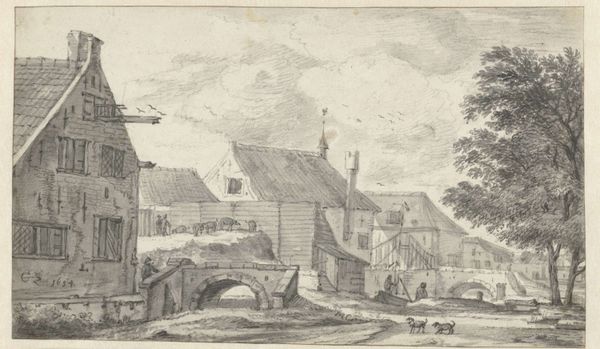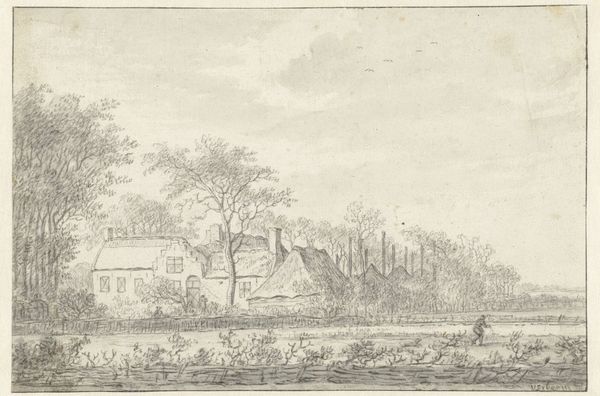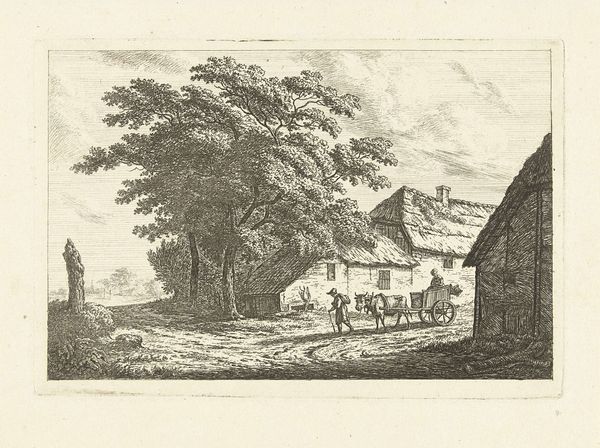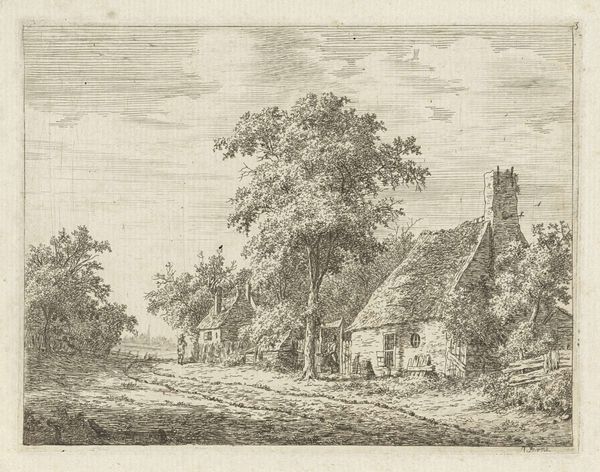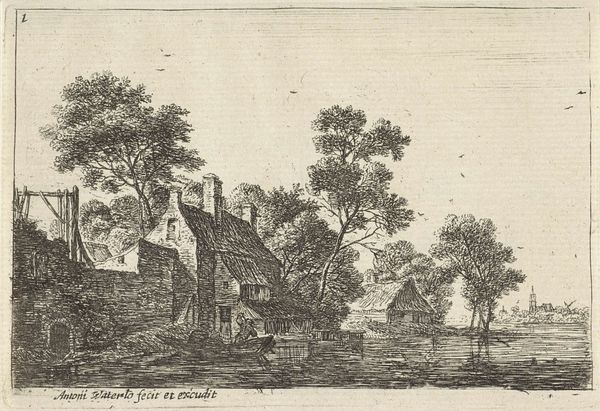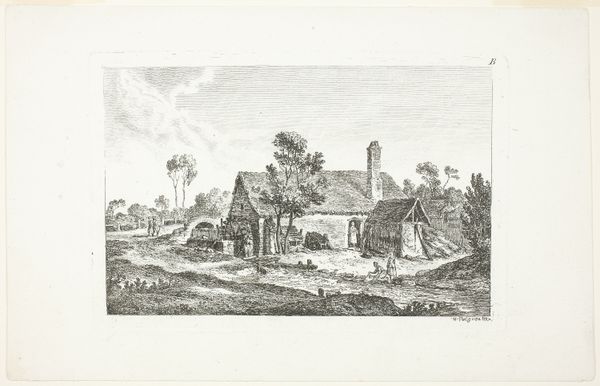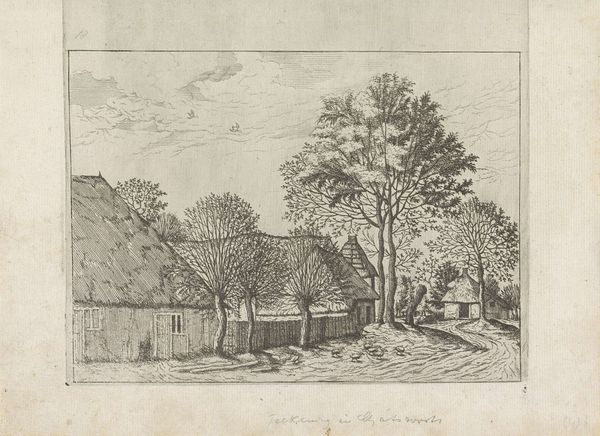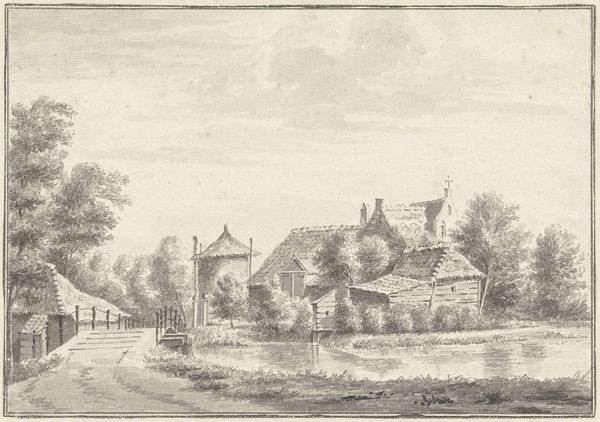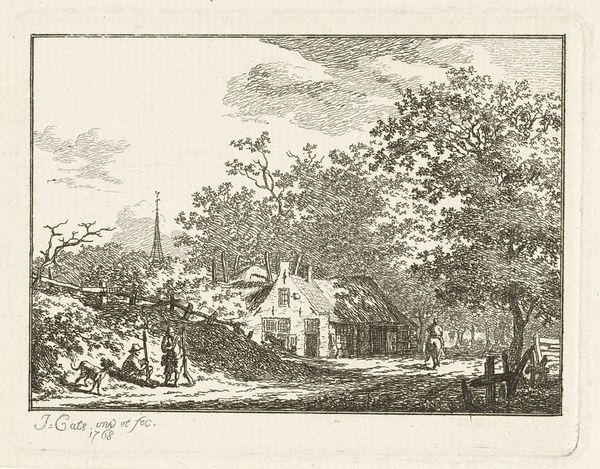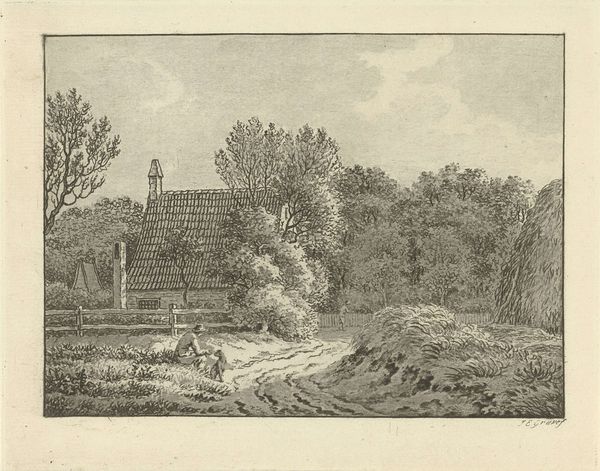
etching
#
dutch-golden-age
#
etching
#
landscape
#
genre-painting
#
realism
Dimensions: height 155 mm, width 175 mm
Copyright: Rijks Museum: Open Domain
Editor: Here we have "Dorpsgezicht met vrouw en kind in de dorpsstraat," or "Village Scene with Woman and Child in the Village Street" by Jan van de Cappelle, created sometime between 1640 and 1679 using etching. There's something so simple and honest about this little scene, almost like a memory. What do you see in this piece that maybe I'm missing? Curator: Well, immediately the presence of the birds overhead strike me. Observe how they appear to be swirling directly above and intertwined with the silhouette of the gnarled, leafless tree. Considering the era, they can't simply be "birds;" what do you suppose they might represent here? Editor: I hadn't even considered them symbolically. Given the figures down below, maybe they represent everyday souls and destiny, a part of the world just as much as the village and the people are? Curator: Precisely. Consider, too, the woman and child seemingly in the middle of the road. The road could easily be read as a metaphor for the road of life, or perhaps, motherhood. The bare tree is also fascinating here. It evokes imagery of mortality, yes, but note its positioning as framing the scene to the right side, as opposed to a healthy tree that might do the same but on the left. Are there any other elements that you find yourself returning to? Editor: I keep looking at the figure walking away from us, into the village, with something on his back. He seems weighed down, like labor. And maybe that’s it? The artist has combined the burdens and cycles of life with these symbols of mortality and community all in a very small etching. Curator: Yes, exactly. And because of the cultural memory that many viewers share and would have also shared in that period, van de Cappelle could say a lot without laboring a description. This allows viewers across centuries to see, feel, and understand the visual and emotional tone of a landscape or place, and connect to each other's past. I find it quite effective, even now. Editor: I never would have caught all that on my own. Thank you!
Comments
No comments
Be the first to comment and join the conversation on the ultimate creative platform.
